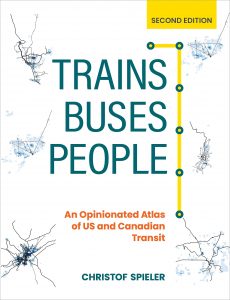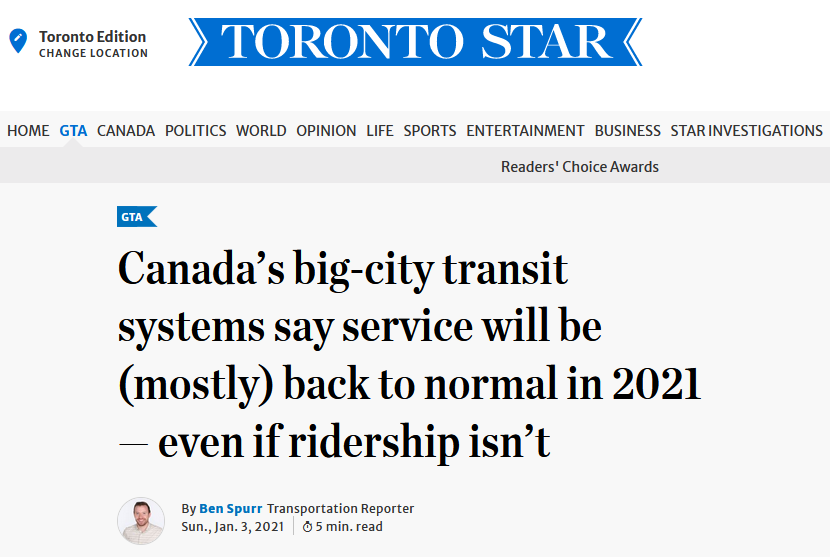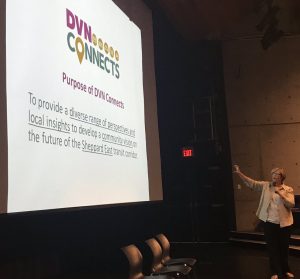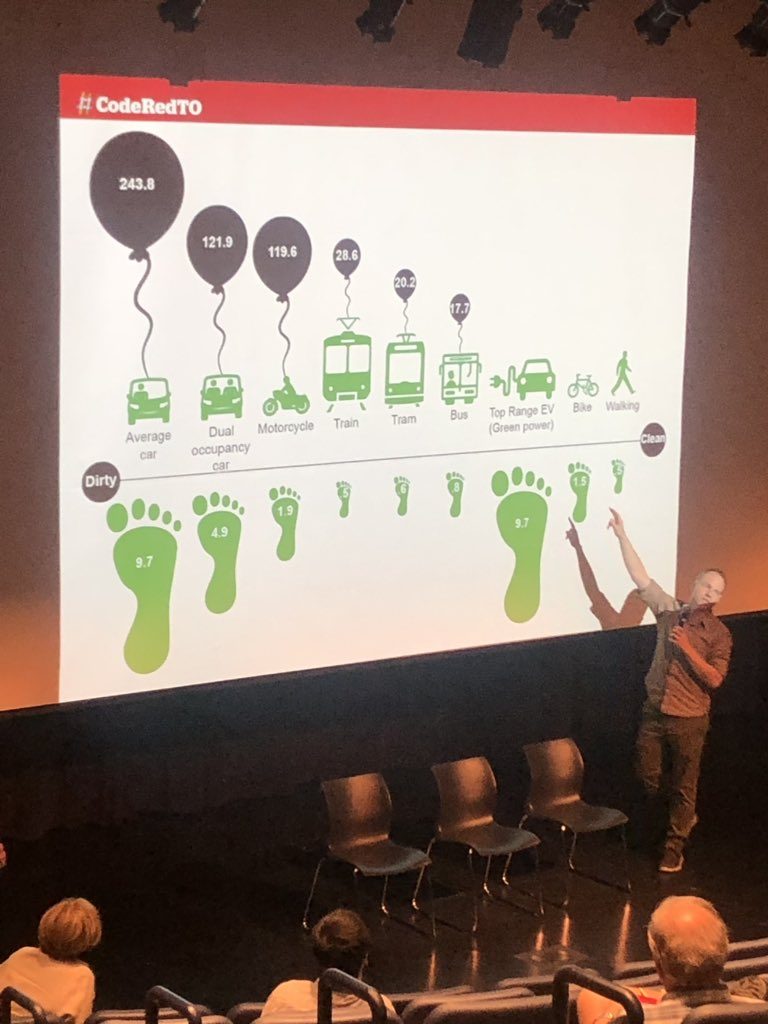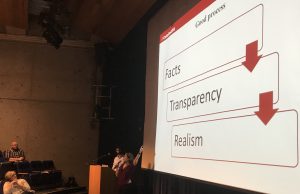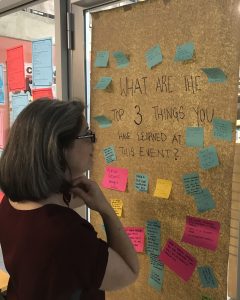A blog post by CodeRedTO advisor and volunteer Patricia Wood, on her appearance on TVO’s The Agenda.
Eighteen minutes isn’t a lot of time, especially when you have to share, so here’s a few more thoughts on the panel from TVO’s The Agenda that aired April 2, 2019 on subway upload negotiations between the Province & City.
First, thank you to Steve Paikin and Brian Kelcey and the TVO team. A meaningful exchange on detailed policy elements has been hard to find on this topic from the province, so I’m glad we found a little of it at TVO.
As I mentioned, the research we’ve done at CodeRedTO shows that you can have good governance with all kind of governance models. But that doesn’t mean it’s no big deal if we switch oversight of transit from the City to the Province. The first problem with that, of course, is that you don’t just take apart a functional agency on a whim. It needs work, but it’s not broken.
I was asked about whether the province or the city will bring more certainty to “making my transit experience better,” and I wish I had also emphasized what a success story the TTC is. Like most other TTC riders, I have many complaints about the system and the service, but there is also no question it is a leader. It has the second-largest ridership in Canada and the US, second only to New York City. Even more importantly, Toronto has the highest mode share on public transit. It is the only city in the region to have made a dent in getting people out of their cars. The King Street Pilot report just revealed that only 34% of people moving through that area travel by car. For the city as a whole, it’s about 50%. But in our neighbouring municipalities, it’s over 70%, and in some cases over 80%. In Burlington, 86% of commuters drive to work. Toronto and TTC are not the problem; they are the model.
So the suggestion that anyone else should take over the planning or decision-making of the TTC is speculative, to say the least. Not only has the TTC managed to continue to build ridership and improve service delivery in very difficult circumstances, but it has achieved success in areas few other systems have—such as suburban bus service. By providing a decent frequency of service, the TTC now has many of its busiest bus routes in suburban areas. Most American cities have never succeeded in getting suburbanites on the bus in significant numbers, because (they say) “people will never get out of their cars” and “there’s no demand.” They cut bus service, which makes it less reliable and fewer riders take it, and on we go into a downward spiral.
The TTC has—most of the time—taken a different path, and it’s been a successful one.
The Board of Trade and others say the Province’s proposals are not mere disruption, that they are made with professional advice. Where is that advice? Where are the business cases? Where are the ridership studies, the social and economic benefit studies? Where is the consultation? Where is Michael Lindsay’s report? Where is the justification for further delays to many of these projects? Where is the justification for prioritizing Richmond Hill over the Eglinton East LRT or the Waterfront LRT? Why aren’t the last two even on the list anymore?
There shouldn’t be this many questions outstanding, if the legislation is just weeks away, as is rumoured.
None of the Province’s rationale for its proposals is public. There is clearly support for its choices, but whether that support goes beyond political strategists and developers remains to be seen.
Where is the money coming from?
We are also told that there is a lot of money coming, that we will like the forthcoming budget. That also remains to be seen. It is important to recognize that no money is on the table, and the source of any money is not clear. The only thing the Province has put out there was a plan for selling the air rights of stations to private interests. A line of experts in real estate development and business (not the most radical bunch) immediately quashed that idea. The revenue generated from such initiatives is NOWHERE near what is required for building subway infrastructure. Are they going to borrow the capital? How much capacity does the Province have to do that right now? Are they going to privatize subway lines?
All of the above questions are not rhetorical, nor snark. They are real questions to which we need answers. This important discussion remains vague and opaque.
If the Province puts up some money, and the federal government is persuaded to contribute, the City will still be required to contribute a fair sum, which is not currently in our budget plans. That is a serious issue.
And there’s the question of money for operating and maintenance. Even if the Province paid 100% of the bill for building new transit, that wouldn’t mean the TTC could afford to operate it. The extension past York University to Vaughan, for example, has low ridership, and running the trains on this new extension is costing the TTC an extra $30 million a year. The system is already the least subsidized in Canada and the United States. Without more subsidization, fares would have to increase significantly to operate any new extensions or service would have to be cut. The Province has suggested it will contribute $160 million a year. That is also nowhere near what is needed. Most other systems in Canada and the US have dedicated revenue streams from taxes or governments that bring in at least $500 million every year. Those other systems are also much smaller and carry millions fewer riders than the TTC.
There are all kinds of other issues to address with the TTC, but there is no getting around the fact that it simply needs more money to deliver service appropriate to its ridership.
Should we be at the table?
One last question I thought we might discuss is whether or not the City should be at the table, participating in these talks. In an ideal scenario, the City and the Province should have a real conversation about the best way to move forward in improving planning, funding and governance of transit in the city and the region. This would normally a long-term, public discussion, possibly led by a joint task force. Instead we have a closed-door process and a very tight timeframe. The City is certainly in a difficult position. If it participates, it gives legitimacy to a process that may not in fact take the position and concerns of the City seriously. If it does not participate, then the Province can argue it is uncooperative and so will act alone.
Are we even at the table?
In fact, it’s worth asking if the City is even “at the table.” Where is the real table? The letters from Cabinet Advisor Michael Lindsay and Deputy Minister Shelly Tapp raise real concerns. That first letter contained unforced errors that should never have seen the light of day. The most odd is the assertion that tunneling the Eglinton West LRT extension of the Crosstown had not been previously considered. If the table the City sits at is the actual site of negotiations, planning and decision-making, then surely this idea was floated. In which case, it would have been shot down immediately as false.
Either the idea was never floated before it went in the letter, which means “the table” is not where plans are made, or the idea was floated and corrected, but the correction was ignored, which means “the table” is not where plans are made.
Whether the City should or should not be at the table is ultimately a less important question than where the real decisions are being made. Is this whole process about building more of what the city and the region need, or is it about creating a system where the province can build whatever it wants without asking for consent?
When I deputed to Executive Council for CodeRedTO a couple of weeks ago, I was asked to consider the possibility that the Province didn’t have any real plans yet. It is crystal clear that the Province has plans. It is not so clear that they are open for discussion.
Tricia Wood is Professor of Geography and co-founder of the City Institute at York University. She has particular interests in democratic practices and people’s mobility. She is also an urban affairs columnist for Spacing.ca.
